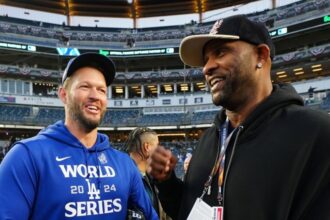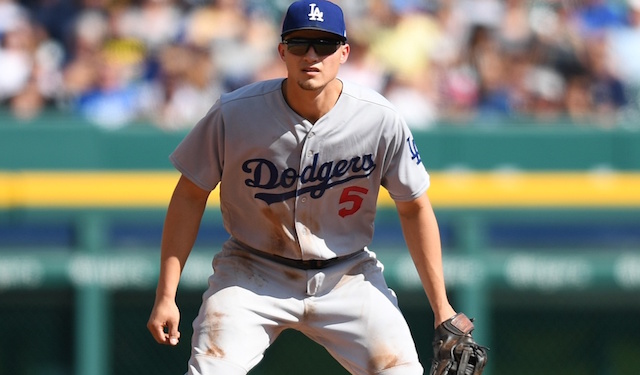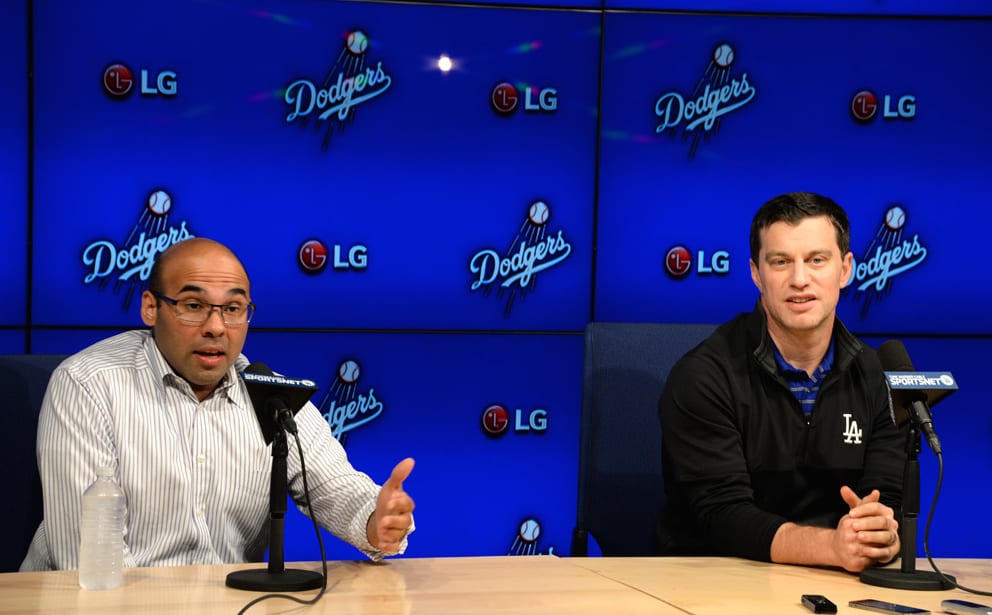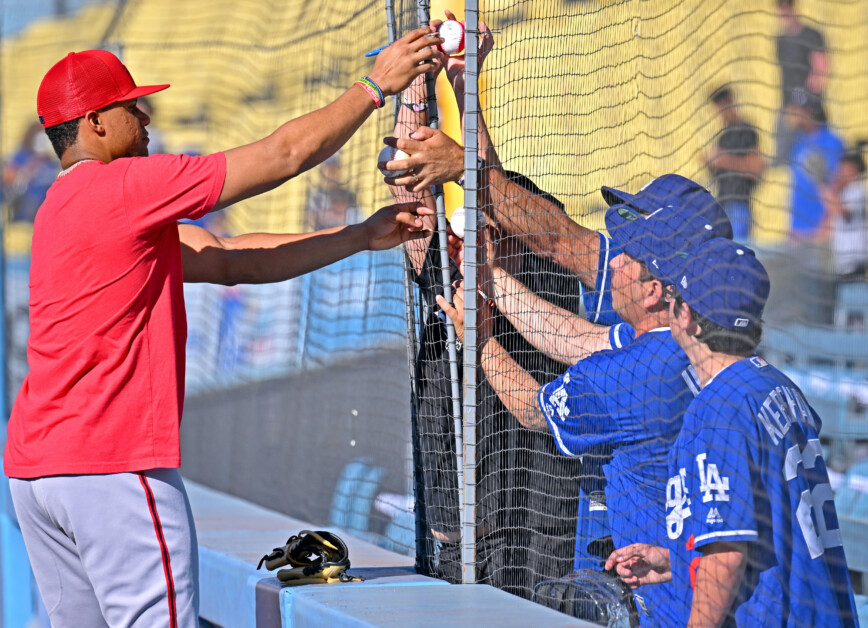Before the World Series even concluded and free agency started, the Los Angeles Dodgers were linked to one of baseball’s most charismatic superstars in Cleveland Indians All-Star Francisco Lindor.
Why would the Indians, a team which has been in contention for the past half-decade and looks to continue doing so, want to trade their best player? The answer, as it often is with these scenarios, is money.
The Indians are valued as the sixth-lowest franchise in baseball, something they frequently remind their fans of when failing to make needed upgrades to the roster. Cleveland owner Paul Dolan, discussing Lindor before the 2019 season, told fans to “Enjoy him. We control him for three more years. Enjoy him and we’ll see what happens.”
It’s worth laughing at this statement on its face; every single team could afford to pay Francisco Lindor if they truly wanted to. Major League Baseball saw record revenues in 2018, which don’t look to drop off this year either.
Fans of the Dodgers or New York Yankees, or fellow big market teams, would likely revolt if one of their owners made a similar statement about Aaron Judge or Cody Bellinger. Fans of small market teams have no choice, however, so here we are.
An Indians team, which, as currently constructed, has a solid chance to contend next season, is looking to trade their best player, for no reason other than to save money.
Now, onto where the Dodgers come in. As is the case with practically any major name on the trade market, the Dodgers are being linked to Lindor. Make no mistake, teams want other teams to believe the Dodgers are interested in their players.
The Dodgers, with their large payroll, winning team, and deep farm system, offer a strong negotiating point for any team seeking to sell. “Don’t like our price? Alright, we’ll just go talk to the Dodgers.”
That said, the Dodgers also benefit from this consistent rumor mill. By being linked to so many players, they can threaten to walk away from any deal they feel costs too much, with the legitimate ability to actually follow through.
Because of the team’s position player flexibility, they don’t necessarily have to go after any one player or position in particular. With the likes of Bellinger, Max Muncy, Chris Taylor and others able to shift around the diamond, the team can just target good hitters, rather than specific positional upgrades (though it doesn’t prevent them from doing so either), and figure out the rest when the dust settles.
Let’s take a look at three trade possibilities that get Francisco Lindor to the Dodgers.
Option One: Lindor for prospects
Dodgers Receive: Francisco Lindor
Indians Receive: Keibert Ruiz, Josiah Gray, Edwin Rios
Much has been discussed about what would happen to Corey Seager, who, like Lindor, has two years left of team control before reaching free agency. In this scenario, the Dodgers say “Screw it,” and decide to keep Seager while also acquiring Lindor.
One of those two would have to shift off their usual position, and it’d probably be Seager, who’d move to third base, with Turner moving to first, Muncy moving full-time to second, and probably results in the Dodgers trying out Gavin Lux in the outfield.
This, in turn, likely results in the trade of a non-Bellinger outfielder as well.
This deal would make the Dodgers undeniably better at the Major League level, though it would take away arguably their two top prospects remaining in the Minor Leagues (in other words, not including Lux, Dustin May or Tony Gonsolin; additionally, unlike those three, Will Smith graduated from prospect status this season).
Keibert Ruiz struggled a bit this year, but he’s still regarded as one of the best catching prospects. A broken finger ended his season just nine games after a promotion to Triple-A Oklahoma City, where he’ll likely begin next year.
Ruiz has the potentially to form one of the best catching duos in baseball with Smith, if the Dodgers choose to keep him. Ruiz hit just .254/.329/.330 with an 88 wRC+ in his repeat at Double-A Tulsa, which caused some concern among fans and scouts.
However, his walk rate (9%) and strikeout rate (6.8%) display a hitter with a keen knowledge of the strike zone, even more impressive considering his age. When he was promoted to Triple-A, he became the youngest player in the Pacific Coast League. His glove is also considered very strong, and he’s an extremely accurate thrower from behind the plate.
The Dodgers’ catching prospect depth also includes 2017 third-rounder Connor Wong, who, in the mold of Austin Barnes, can also play the infield. Wong saw his first promotion to Double-A this past season, where he put up a .997 OPS and 175 wRC+ in forty games with the Drillers.
Even further away is uber prospect Diego Cartaya, who made his stateside debut as a 17-year-old in the Arizona League, hitting .296/.353/.437 with a 115 wRC+. Cartaya, young as he is, is incredibly talented and poised for his age, and looks to rocket up the Minor League ladder.
The Dodgers’ catching depth isn’t necessarily a reason to trade Ruiz, but it does give the them the ability to do so more comfortably. If they were to make a deal for Lindor headlined by just prospects, Ruiz is a natural fit to be included.
Josiah Gray, on the other hand, might be harder to part with. As the old adage goes, you can never have enough pitching, and Gray had the most prominent breakout of any Dodgers’ prospect this year.
Across three levels this season, Gray went a combined 11-2 with a 2.28 ERA and 147 strikeouts against 31 walks over 130 innings pitched.
Gray’s FIP was between 2.25 and 2.58 at each level as well, and while his xFIP was higher at each level, this should be seen as more indicative of Gray’s ability to prevent homers rather than an anomaly (xFIP normalizes home run rate to league average, so players who excel at preventing home runs are penalized).
Gray’s fastball and slider are already plus, and his developing changeup could make him a bonafide No.2 or 3 starter in the future. Given that he’s only been pitching full-time since 2017, he’s got loads of upside, and losing him would be tough to stomach for fans seeking an entirely homegrown rotation in the future.
Edwin Rios, though not valued as highly as Ruiz or Gray, would give the Indians an MLB-ready corner infielder, and one with significant power, which could play well in the lefty-friendly Progressive Field.
Rios’ 31 homers in just 104 Triple-A games are rendered slightly less impressive by both the juiced ball, his 115 wRC+, and his 34.5% strikeout rate is an increase from his previous two years with Oklahoma City.
Rios did do quite well for the Dodgers, hitting .277/.393/.617 with four homers in 56 plate appearances. However, with the emergence of Matt Beaty, and presuming a Seager move to third base in the event of a Lindor trade (well, at least this scenario), Rios’ spot is less secure, and would fit well in a trade like this.
Option Two: Corey Seager and prospects for Francisco Lindor
Dodgers Receive: Francisco Lindor
Indians Receive: Corey Seager, Jeter Downs, John Rooney
In this deal, the Dodgers and Indians swap shortstops, with the Dodgers paying the price of a couple prospects to upgrade to Lindor. Any Dodgers trade with Lindor has to come with a reasonable expectation that they will look to extend him, which would make the emerging Jeter Downs a trade option.
Downs had a phenomenal year after being traded with Gray from Cincinnati, hitting 24 homers across two levels, earning a promotion to Double-A towards the end of the season. Downs hit .269/.354/.507 with a 134 wRC+ at High-A, adding a 207 wRC+ in 12 games with the Drillers.
The biggest question for Downs remains his eventual defensive home, with some evaluators believing he’ll need to move off shortstop, to second base, third base, or maybe even the outfield.
The Dodgers are now loaded in the middle infield throughout the Minors, with Downs and Omar Estevez finishing the year Double-A, Devin Mann and Jacob Amaya at High-A Rancho Cucamonga, breakout 17-year-old Alex De Jesus in the Arizona League, and first rounder Michael Busch as well.
And of course, we can’t forget about Lux, either. Besides catcher, if there’s one prospect spot the team can probably afford to deal from, it’s the middle infield.
Rooney, the team’s third-round pick from 2018, ascended to High-A this season. He went 10-4 with a 2.84 ERA in 20 starts this year between Low-A Great Lakes and Rancho Cucamonga.
The 6’5″ lefty put up 89 strikeouts and 39 walks in 104.2 innings, and actually improved his walk rate when he was promoted. Rooney seems like the type of high-floor college pitcher the Indians usually like, and would be a nice third piece in this this hypothetical deal.
Option Three: Three Team Deal
Dodgers Receive: Francisco Lindor, ?
Indians Receive: Prospects
Third Team Receives: Corey Seager, ?
This one could look a lot of different ways, so let’s just lay out the basic parameters and leave the rest unknown. If the Indians didn’t want Seager back, but the Dodgers didn’t want to keep him and Lindor, they could involve a third team, who’d help mitigate the prospect cost heading back to Cleveland.
The Yankees could be a potential option, with Didi Gregorious headed to free agency. Oakland, with their natural instinct to sell high, could look to deal Marcus Semien coming off a career year with 7.6 fWAR and one year remaining before free agency.
The Likelihood of a Lindor Trade
Not very high, frankly. While the Dodgers could certainly use another bat, acquiring Lindor, whose primary position is already occupied by a productive player in Seager, with a top prospect in Lux as another option, doesn’t seem like a move the Dodgers would rush to make.
Any deal for Lindor likely comes with steep costs, ones that the Dodgers might be better suited spending on areas of stronger need. Further, any deal with Seager heading back to Cleveland (or somewhere else) also probably involves dealing him at a lower value than the Dodgers might believe him to be worth.
Seager, coming off a return from Tommy John surgery, wasn’t the same MVP-caliber player as he was from 2016-17, and unless the Dodgers truly think he’s not getting back to that level, it’s just difficult to see them moving him now.
That said, there is an argument to made that Lindor, in addition to being a defensive upgrade, would fit better with the Dodgers’ offensive philosophy. Seager’s affinity for swinging at the first pitch and taking shorter at-bats make him an outlier on a Dodgers’ team that is known for making pitchers work, and the playoffs shined a bright light on this trait.
Still, Seager’s habits aren’t necessarily troublesome enough to require his departure, and Lindor wouldn’t represent a monumental upgrade either.
The most probable option, it would seem, is being able to use a third team to help enable that slight upgrade from Seager to Lindor at a lower cost than a two-team deal would. What that would look like is anyone’s guess, and of course, it would also require a non-Dodgers team believing in Seager’s ability to return to a higher level enough to pay the majority of the prospect cost to Cleveland.
The Dodgers will be connected to plenty of names this offseason, and this probably won’t be the first time we see them connected to Lindor. For now, and likely in the future, these connections remain what they are: just rumors.
Have you subscribed to our YouTube channel? It’s the best way to watch player interviews, exclusive coverage from events and more!








